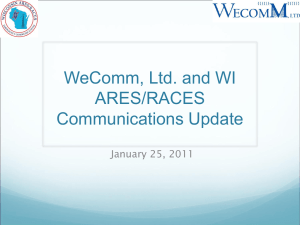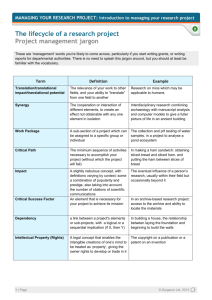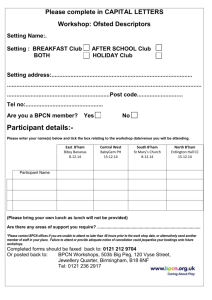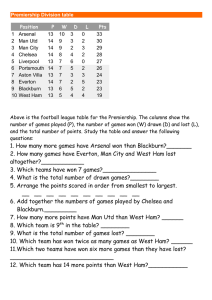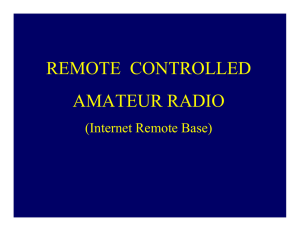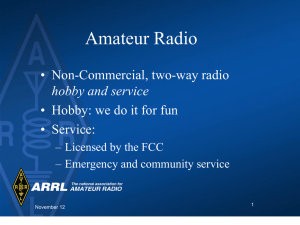I just obtained my ham radio license. Now what?
advertisement
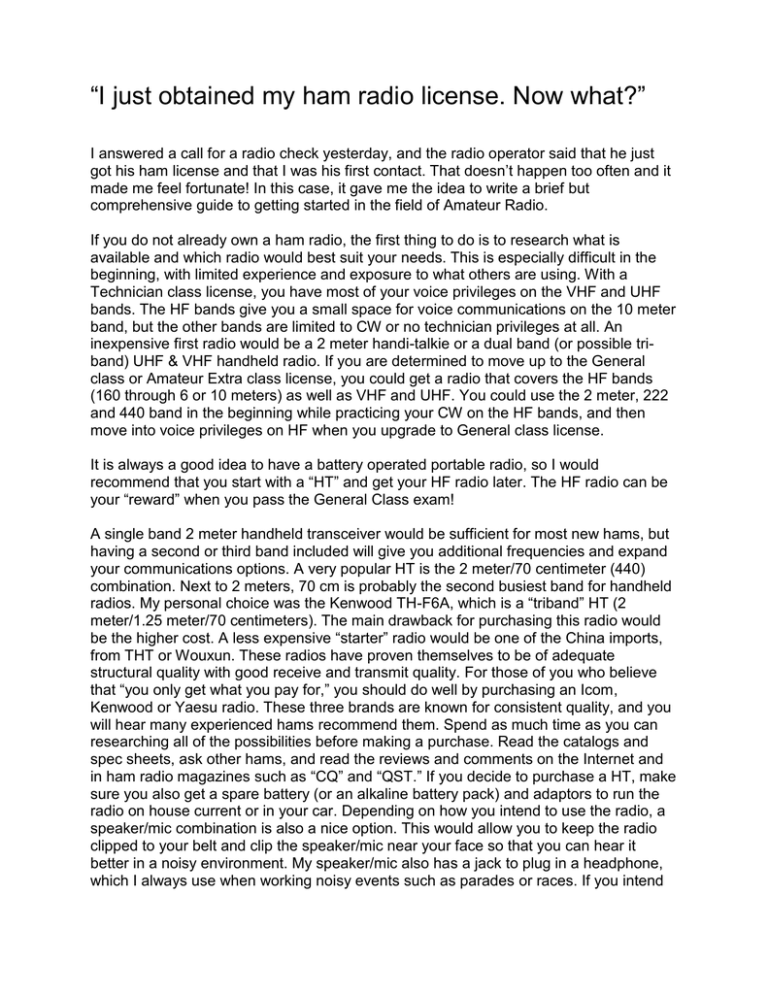
“I just obtained my ham radio license. Now what?” I answered a call for a radio check yesterday, and the radio operator said that he just got his ham license and that I was his first contact. That doesn’t happen too often and it made me feel fortunate! In this case, it gave me the idea to write a brief but comprehensive guide to getting started in the field of Amateur Radio. If you do not already own a ham radio, the first thing to do is to research what is available and which radio would best suit your needs. This is especially difficult in the beginning, with limited experience and exposure to what others are using. With a Technician class license, you have most of your voice privileges on the VHF and UHF bands. The HF bands give you a small space for voice communications on the 10 meter band, but the other bands are limited to CW or no technician privileges at all. An inexpensive first radio would be a 2 meter handi-talkie or a dual band (or possible triband) UHF & VHF handheld radio. If you are determined to move up to the General class or Amateur Extra class license, you could get a radio that covers the HF bands (160 through 6 or 10 meters) as well as VHF and UHF. You could use the 2 meter, 222 and 440 band in the beginning while practicing your CW on the HF bands, and then move into voice privileges on HF when you upgrade to General class license. It is always a good idea to have a battery operated portable radio, so I would recommend that you start with a “HT” and get your HF radio later. The HF radio can be your “reward” when you pass the General Class exam! A single band 2 meter handheld transceiver would be sufficient for most new hams, but having a second or third band included will give you additional frequencies and expand your communications options. A very popular HT is the 2 meter/70 centimeter (440) combination. Next to 2 meters, 70 cm is probably the second busiest band for handheld radios. My personal choice was the Kenwood TH-F6A, which is a “triband” HT (2 meter/1.25 meter/70 centimeters). The main drawback for purchasing this radio would be the higher cost. A less expensive “starter” radio would be one of the China imports, from THT or Wouxun. These radios have proven themselves to be of adequate structural quality with good receive and transmit quality. For those of you who believe that “you only get what you pay for,” you should do well by purchasing an Icom, Kenwood or Yaesu radio. These three brands are known for consistent quality, and you will hear many experienced hams recommend them. Spend as much time as you can researching all of the possibilities before making a purchase. Read the catalogs and spec sheets, ask other hams, and read the reviews and comments on the Internet and in ham radio magazines such as “CQ” and “QST.” If you decide to purchase a HT, make sure you also get a spare battery (or an alkaline battery pack) and adaptors to run the radio on house current or in your car. Depending on how you intend to use the radio, a speaker/mic combination is also a nice option. This would allow you to keep the radio clipped to your belt and clip the speaker/mic near your face so that you can hear it better in a noisy environment. My speaker/mic also has a jack to plug in a headphone, which I always use when working noisy events such as parades or races. If you intend to use your radio in a car, it will not work well inside the car, so get an exterior antenna, such as a magnet mount or trunk lip antenna. The next step, after you purchase your radio, is to get to know all you can about your radio. Read the entire manual and try out all of the features. You should know how to quickly change frequencies, adjust the volume and squelch, and how to program frequencies into the radio. Either purchase a “repeater guide” at your ham radio store or look at online frequency databases such as http://radioreference.com, and see what repeaters are available in your area. At some point up to now, you should have joined a ham radio club, and then you have all the other club members to turn to for advice, such as which frequencies and repeaters to program into your radio. Three factors that determine which club to join are location (does the club meet close to your home?), interest (does the club focus on ham activities that you are interested in, such as DX, contesting or emergency communications?), or membership (which ham radio club do your friends belong to?). Another method of deciding which frequencies and repeaters to use is to program in as many as your radio can store, and then use your radio’s “scan” function to scan the channels so that you hear the activity. Also program in popular simplex frequencies, such as 146.52, which is the National calling frequency for 2 meters. A frequency directory or book about ham radio will suggest additional frequencies that you should be aware of. This leads to the next phase of how to get started – “listen!” Listen to the conversations. Make note which repeaters seem to have more interesting conversations. Listen to what the hams are talking about. Listen to the format used to conduct a conversation. There are a few simple rules to follow in the beginning, and then you can learn the rest as you go. Rule number one states that you give your call sign every 10 minutes and at the end of the conversation. It is not necessary to give your call sign at the beginning of the conversation, but most hams do. Rule number two says to make sure the frequency is not in use before you begin transmitting. Listen for about ten seconds, or ask “is the frequency clear?” If you want to enter a conversation, and feel that you would be welcome to do so, just say “comment,” and when you are acknowledged, give your call sign and say what you wanted to say. (The word “break” is usually reserved for emergencies, so try to find a better word to use to enter the conversation.) When identifying yourself in an informal conversation, it is usually a good idea to give your first name, and if appropriate, and your location or your home city. Rule number three is to be polite and not offend in any way. The final rule is to not use your radio for any activities in which you have a pecuniary interest, or rather, do not use your radio for business purposes or to contact your work or office. You can, however, use the radio to call a business, such as a store or to make an appointment. The exception to the rule is that you can offer goods for sale or purchase as long as the merchandise is used in ham radio, such as selling an antenna or mentioning that you are looking for a power supply. After you have listened for a while and have programmed frequencies into your radio, you are ready to begin talking to others. A good way to begin is to listen to and join in on ham radio “nets.” You can do a web search for nets in your area. Listen to how the net is conducted, and then when the “net control” says “are there any visitors?” press the transmit button and, talking into your microphone, give your call sign. If the net control was able to hear you, he/she will acknowledge your call sign and most likely ask for your first name or your location, and perhaps will ask if you have any traffic for the net. This would be a good time to say that you are are a new ham radio operator, and perhaps other hams will contact you after the net has concluded to welcome you to our hobby! If you are shy or nervous, just say “no traffic” if asked what you want to contribute to the net. Write down the names and call signs of people you hear who are talking about things that also interest you, and when the frequency is clear, you can call one of those persons and start a conversation. Do this by saying the call sign of the party you wish to contact, then give your call sign, such as “W6CAW, this is KJ6ONN.” If the other party is listening, they will respond, and then you will mention your reason for making the contact, such as “I heard you on earlier today talking about model trains, and this is something that I am also interested in.” Remember to “sign off” when your conversation is finished by giving your call sign and saying the work “clear,” or “clear and listening.” The final step is to further your education in any way you can, such as attending seminars, hamfests, conventions and by reading books and magazines. The ARRL is offering a special membership package right now where you will receive a $29.95 “Operating Manual” with your paid membership of $39. Membership also includes a monthly subscription to QST magazine so that you will continue to learn something new each month. I recently received a card from ARRL offering the huge $59.95 Amateur Radio Handbook if you renew your membership for three years. Another way to expand your knowledge is to explore all of the links in the “Amateur Radio Resources” section of this website, http://radio.tomsmerk.com or the page “Education & Resources for New Hams.” Don’t neglect to purchase study materials for the next level of licensing, the General Class license, and then finally, Amateur Extra! My purpose in writing this was to be brief but informative. There is much more I could say, but then this would turn into a lengthy article, just like many others that are available. I hope I succeeded in giving you some important and useful information to get started, and a desire to further your education and experience. Please email any suggestions to tom@tomsmerk.com or AA6TS@arrl.net. Here are some other articles that might be of interest: How to get started with Ham Radio Top Ten Rules for Being a Good Amateur Radio Operator Comic Books to introduce people to Ham Radio Upgrading to Amateur Radio from Other Radio Services Ham Radio Training for Responders and Groups Guide to Joining a Net for New Hams Guide to Using Repeaters for New Hams What to put in your Go Kit All of these are available from my web site listed above. Enjoy!

